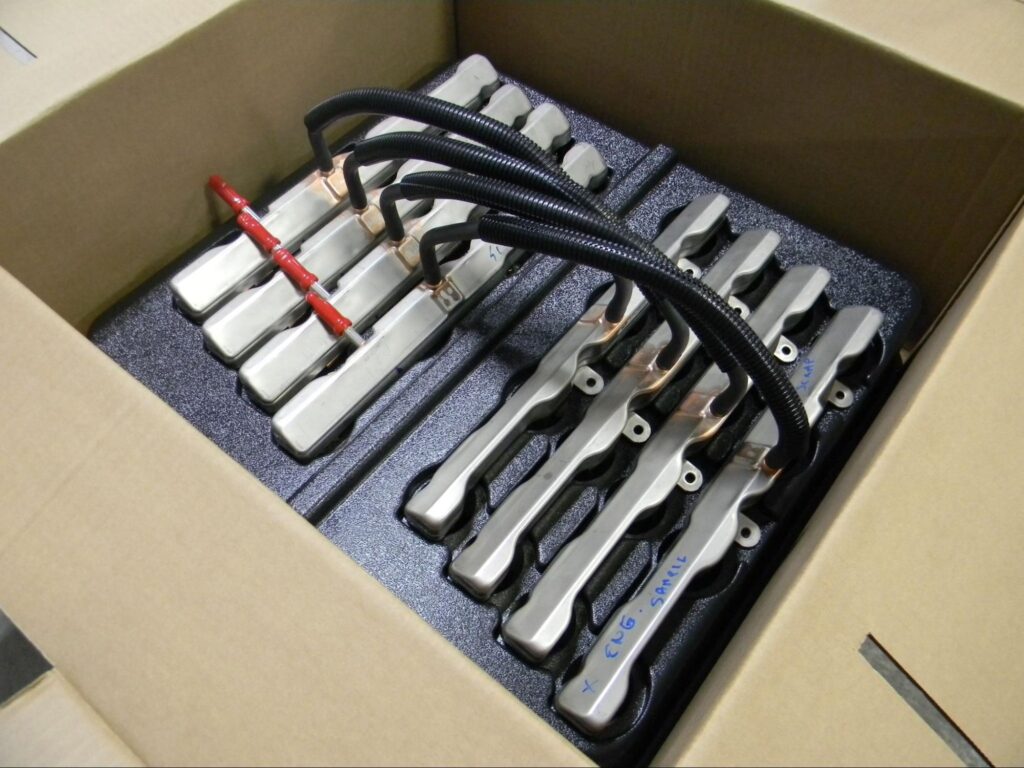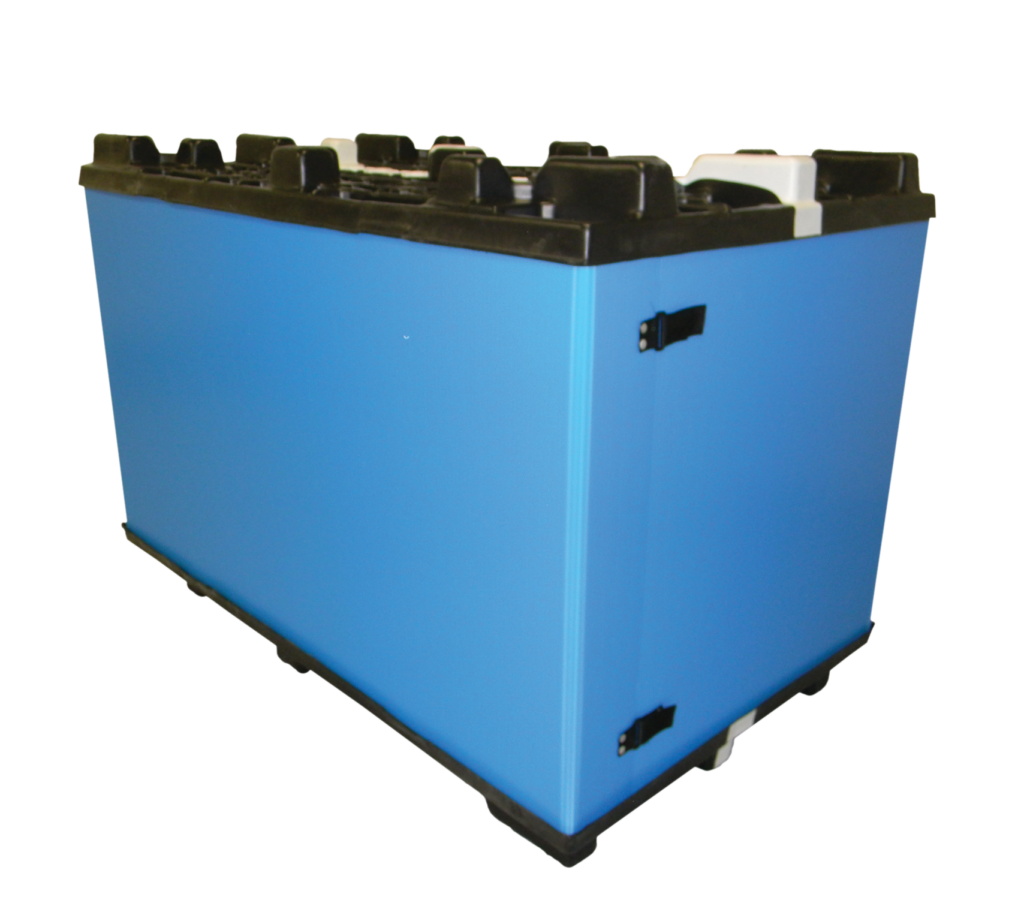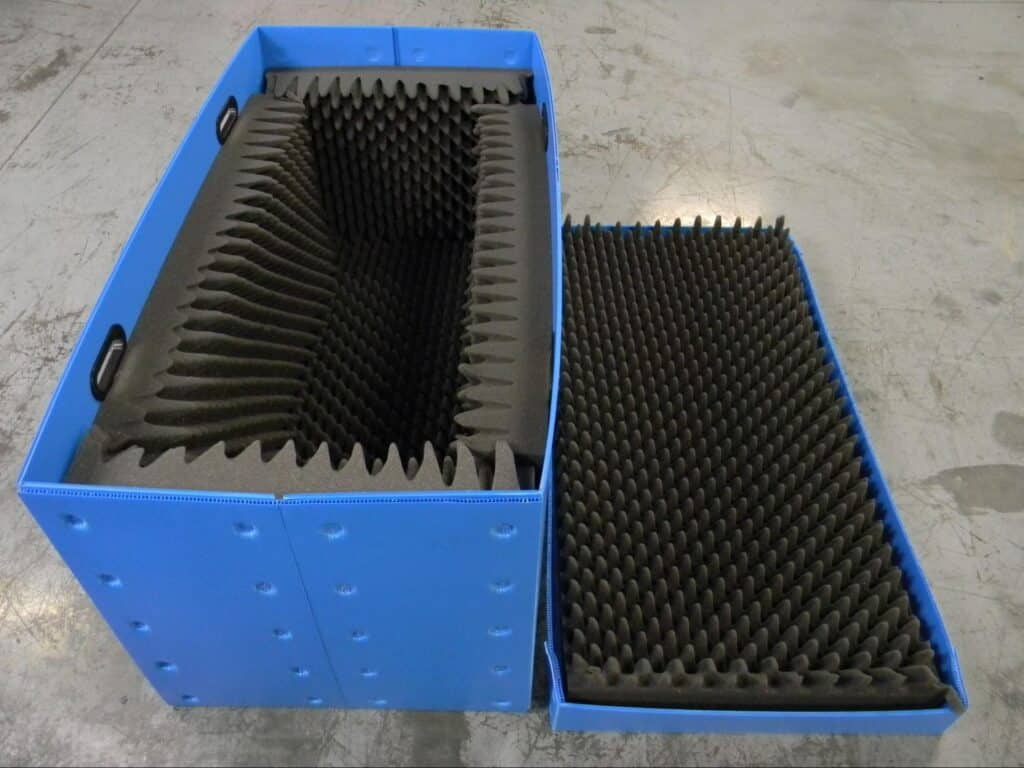In today’s complex supply chain, choosing the right packaging is a critical decision that impacts everything from product safety to your bottom line. For industries handling high-value or delicate goods—such as automotive, electronics, or medical—a well-crafted packaging strategy is essential for seamless operations and customer satisfaction. The protective materials used to secure and stabilize items during transit, known as dunnage, are at the heart of this strategy.
However, with a vast array of dunnage materials available, selecting the ideal solution can be an overwhelming task where even minor oversights lead to damaged goods, wasted resources, and inflated costs. This is where a Dunnage Selection Matrix becomes an indispensable tool. It provides a structured framework to systematically evaluate your options, ensuring you make an informed, data-driven decision every time.
By integrating a Dunnage Selection Matrix into your process, you can maximize efficiency, improve product safety, and optimize long-term costs. As a leader in custom dunnage solutions, Universal Package utilizes this exact approach to engineer the perfect fit for our clients. This article will guide you through what a matrix is, why it’s essential for your business, and how to create and use one to select the perfect custom dunnage solution.
What is a Dunnage Selection Matrix and Why is it Essential?
Dunnage refers to the crucial materials—like foam inserts, corrugated plastic partitions, textile pads, or even steel racks—used to secure and protect products during shipping and storage. Far from being a minor accessory, dunnage is integral to maintaining product integrity and operational efficiency. The right choice can streamline everything from loading and unloading to maximizing storage space.
A Dunnage Selection Matrix simplifies the complex process of choosing the right dunnage. It is a practical tool that organizes key decision-making criteria—such as product specifications, material durability, and environmental conditions—into a clear, side-by-side comparison. By formalizing the evaluation process, the matrix empowers you to move beyond guesswork and make consistent, effective choices.
Incorporating a Dunnage Selection Matrix into your packaging strategy provides significant benefits, including:
- Minimized Risk of Damage: By carefully evaluating materials and configurations against your product’s specific needs, the matrix helps you select the most effective protective solution, reducing transit-related damage and the associated costs of returns or replacements.
- Enhanced Operational Efficiency: The right dunnage simplifies handling, loading, and unloading processes. It also allows for better space utilization through effective stacking and organization, streamlining your entire logistics workflow.
- Improved Shipment Quality and Customer Satisfaction: With fewer damaged items, you deliver higher-quality shipments, which directly improves customer satisfaction and reduces complaints.
- Data-Driven Cost Control: The matrix allows you to weigh factors like initial investment, reusability, and lifespan, ensuring your dunnage choice aligns with long-term financial goals, sustainability efforts, and overall functionality.
Ultimately, a Dunnage Selection Matrix is a proactive tool that ensures every packaging decision is thoughtful, consistent, and aligned with your organization’s goals, making it an indispensable asset for achieving better packaging outcomes.
Key Considerations for an Effective Dunnage Selection Matrix

Creating an effective Dunnage Selection Matrix involves identifying and weighing the right factors that suit your packaging and shipping needs. By systematically evaluating these considerations, businesses can select the most reliable, cost-efficient, and protective dunnage for their products. Below are the key elements to include in your evaluation process to ensure optimal results:
Material Type
Dunnage is available in a variety of materials, each tailored to specific needs based on product characteristics and shipping requirements. Choosing the right material is fundamental to achieving quality protection and long-term usability.
- Corrugated Plastic: This lightweight yet durable material offers exceptional resistance to moisture and can be easily customized for various product shapes and sizes.
- Foam: Known for its superior cushioning capabilities, foam is ideal for fragile and irregularly shaped items.
- Textile Dunnage: Perfect for scratch-sensitive surfaces, textile dunnage is often custom-sewn or shaped to cradle products.
- Steel and Metal Racks: For heavy or bulky items, such as automotive engine parts or construction components, steel racks ensure secure storage and shipping for large loads.
When evaluating materials, always consider the weight, fragility, and handling methods of your products. Additionally, assess compatibility with reusable shipping cycles to maximize both cost-efficiency and environmental benefits.
Product-Specific Requirements
Every product has unique needs, making it critical to tailor your dunnage selection process accordingly. Examining the specific characteristics of the products being shipped can help identify the ideal dunnage solution.
- Dimensions: Choosing dunnage that matches the exact dimensions of your products minimizes unnecessary movement during transit.
- Weight: Heavy products may require reinforced dunnage or rigid materials like steel racks, while lightweight items benefit from foam or custom kitting totes.
- Stacking and Handling: For goods requiring frequent movement with forklifts or conveyors, robust dunnage and Plastic Totes Solutions ensure stability while streamlining storage.
Product-specific needs guide critical packaging decisions and ensure tailored solutions that safeguard each unique item in transit or storage.
Environmental Conditions
Shipping and storage environments are dynamic, often requiring adaptable dunnage materials to withstand varying conditions. Whether products are shipped across diverse climates or stored under specific controls, environmental factors must be a priority in your evaluation.
- Temperature Extremes: Materials like corrugated plastic or foam can handle heat or cold better than fragile or adhesive-based options.
- Moisture and Weather Exposure: Moisture-resistant foams and plastics, as well as sleeve packs, are ideal for damp or outdoor conditions.
- Sanitation Requirements: Cleanable and contaminant-resistant dunnage is essential for industries like medical or pharmaceutical, ensuring hygienic packaging without compromising protection.
Anticipating environmental conditions during transit and storage ensures that dunnage performs effectively, no matter the challenges posed by weather, transportation, or storage settings.
Cost-Efficiency
Cost is an essential component of any dunnage selection decision. However, it’s important to look beyond the initial price point. Instead, aim for a solution that balances upfront investment with long-term value, quality, and sustainability.
- Initial Costs: Lighter materials like foam and corrugated plastic might have lower upfront costs, while steel-based solutions may be more expensive but offer greater durability.
- Lifespan and Reusability: Opt for reusable dunnage whenever possible. We also offer clean and repair services to extend the product lifespan and enhance savings over time.
- Sustainability and Waste Reduction: Lightweight, recyclable, or reusable dunnage helps lower both disposal fees and carbon footprint. In some cases, expendable packaging solutions might be considered for specialized or one-way shipments.
Assessing cost-related factors within your Dunnage Selection Matrix ensures that the chosen solution offers the best balance of price, performance, and sustainability for your business.
How to Build and Use Your Dunnage Selection Matrix: A Step-by-Step Guide
Developing and using a Dunnage Selection Matrix streamlines your decision-making process. Let’s walk through the steps, using a real-world scenario to illustrate how it works: packaging delicate automotive sensors that have fragile connectors and are sensitive to static.
Step 1: Define Product and Shipping Requirements
First, identify all the critical details about the product and its journey. Consider its physical attributes, vulnerabilities, and the environment it will face.
- Size, Shape, and Weight: What are the physical dimensions?
- Fragility: Is it vulnerable to shock, vibration, or surface scratches?
- Handling Needs: Will it be moved by forklifts or conveyors? Does it need to be stackable?
- Shipping Environment: Will it be exposed to temperature extremes, moisture, or humidity?
Automotive Sensor Example:
Our key requirements are protecting fragile connectors from vibration, mitigating static electricity, ensuring the packaging is durable enough for conveyor handling, and finding a reusable solution to control long-term costs.
Step 2: Identify Potential Dunnage Materials
Next, list all viable dunnage materials that could meet your initial requirements. Don’t narrow it down too much yet; the goal is to have several options to compare. Common choices include:
- Foam assemblies
- Corrugated plastic inserts
- Textile dunnage
- Steel racks for heavy components
- Plastic totes and bulk containers
Automotive Sensor Example:
Based on our needs, the potential dunnage options are: foam assemblies, corrugated plastic inserts, textile dunnage, and reusable plastic totes with custom inserts.
Step 3: Establish Evaluation Criteria and a Scoring System
Determine the key factors that will define the “best” solution for you. These criteria will form the columns of your matrix. Common factors include:
- Durability: Material’s ability to withstand wear and tear.
- Environmental resistance: Performance under humidity, temperature shifts, or weather.
- Ease of handling: Suitability for automated or manual processes.
- Cost-effectiveness: Balance between upfront investment and potential damage reduction.
- Reusability and sustainability: Impact on long-term costs and ecological footprint.
Once you have your criteria, create a simple scoring system (e.g., a 1-5 scale) to objectively rate each material. You can also “weight” certain criteria that are more important than others.
Step 4: Evaluate, Compare, and Select the Best Solution
Rate each of your potential materials against every criterion in your matrix. This is where the ideal solution becomes clear.
Automotive Sensor Example Evaluation:
Foam scores highest on shock absorption but may require an anti-static coating, adding cost.
- Corrugated plastic offers good moisture resistance and is durable for conveyors but has only moderate vibration protection.
- Textile dunnage is excellent for delicate surfaces but is a costlier option.
- Plastic totes with Inserts score well on reusability, handling, and durability.
The Selection: After comparing the scores, a hybrid solution of corrugated plastic inserts combined with foam supports inside a reusable plastic tote offers the best balance of cushioning, static protection, durability, and long-term value.
Step 5: Document, Monitor, and Update Regularly
Once you’ve made your selection, document the decision and the reasoning behind it for future consistency. After implementation, monitor the solution’s performance over several shipments. Business needs change, so plan to revisit your matrix periodically to ensure your dunnage remains the most efficient and cost-effective choice.
The Universal Package Advantage: Your Partner in Custom Dunnage Solutions

Collaborating with Universal Package offers a strategic advantage that goes beyond simply buying a product. As a trusted leader in industrial packaging, we partner with you to engineer reliable, efficient, and innovative dunnage solutions that deliver tangible benefits to your bottom line and operational goals.
Here’s how our tailored approach sets you apart:
- Uncompromising Product Protection: Our primary goal is to ensure your products arrive safely. We achieve this by designing completely custom solutions using a comprehensive range of materials—from corrugated plastic and foam assemblies to steel racks and textile dunnage—that are perfectly matched to your product’s specific protection requirements. Fewer damages mean fewer returns and higher customer satisfaction.
- Industry-Specific Expertise that Streamlines Your Process: We understand that every industry has unique challenges. Our expert consultation process dives deep into your needs, whether you’re in automotive, electronics, or construction. This allows us to deliver dunnage that seamlessly integrates into your existing workflows, simplifying handling and logistics so you can focus on your core operations.
- Long-Term Cost Optimization and Sustainability: We prioritize durable, reusable dunnage to lower your total lifecycle costs and support your environmental goals. To maximize the value of your investment, we offer flexible support services, including cleaning, repair, lease, and rental options, which extend the life of your packaging and reduce landfill waste.
- A Commitment to Long-Term Collaboration: Your needs evolve, and so do our solutions. We value client feedback and are committed to a continuous partnership, ensuring your packaging remains efficient, effective, and aligned with your goals for years to come.
At Universal Package, we combine innovative engineering with a deep commitment to quality and customer satisfaction, making us your ideal partner in protecting products and optimizing your supply chain.
Leverage a Dunnage Selection Matrix for Optimal Packaging Solutions
A Dunnage Selection Matrix is more than just a decision-making tool—it’s a pathway to smarter packaging strategies that protect your products, optimize costs, and enhance operational efficiency. By integrating this structured approach, your business can minimize product damage, streamline logistics, and stay ahead of industry demands.
Partnering with a trusted provider like Universal Package takes this process to the next level. With customized dunnage solutions and industry expertise, we ensure your packaging strategy is not only effective but also aligned with your product-specific and operational needs.
Ready to elevate your packaging game? Contact Universal Package today to learn how we can help you build the right Dunnage Selection Matrix and deliver tailored solutions that safeguard your products, reduce waste, and improve your bottom line. Let’s create packaging that works as hard as you do!





